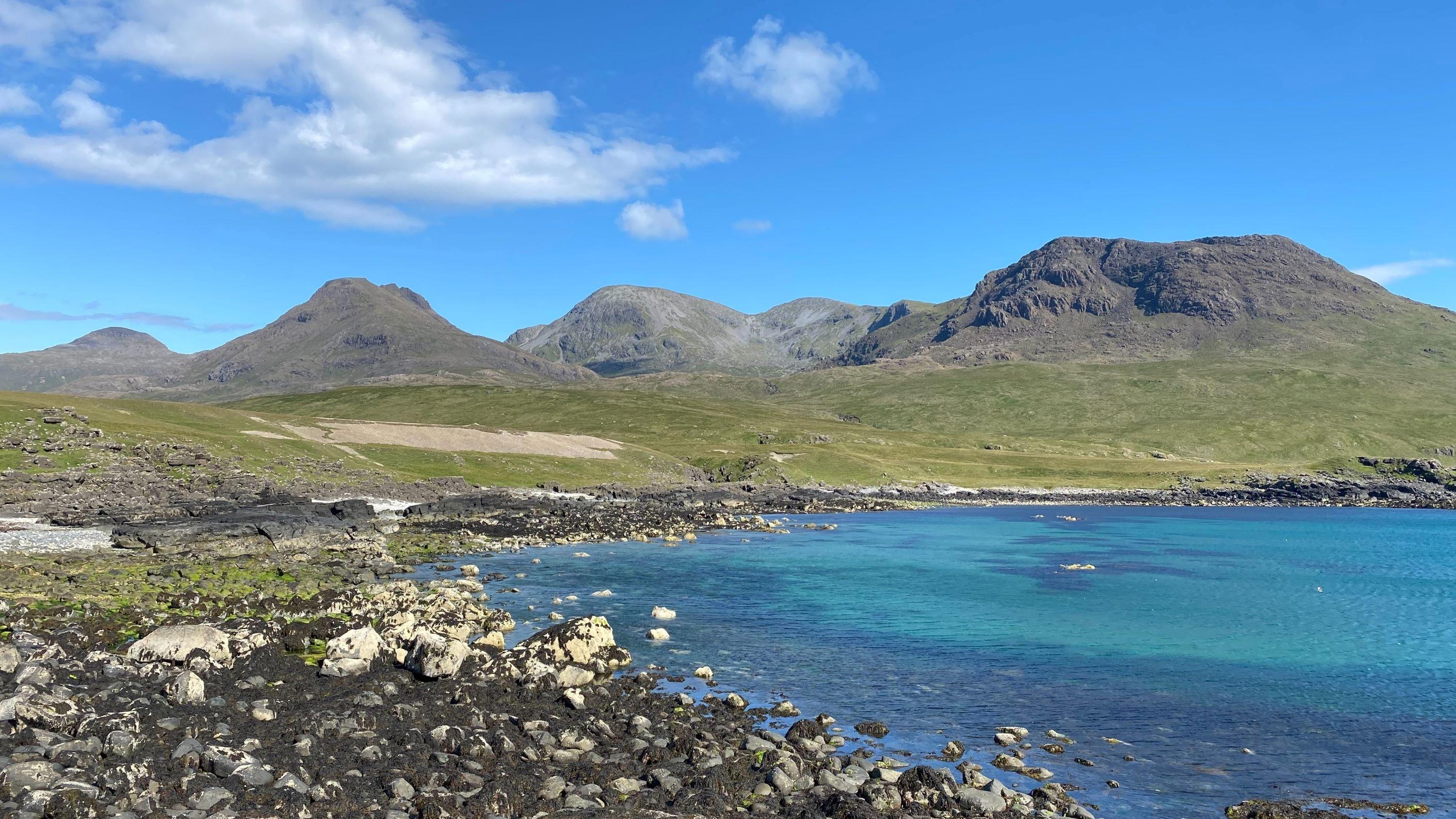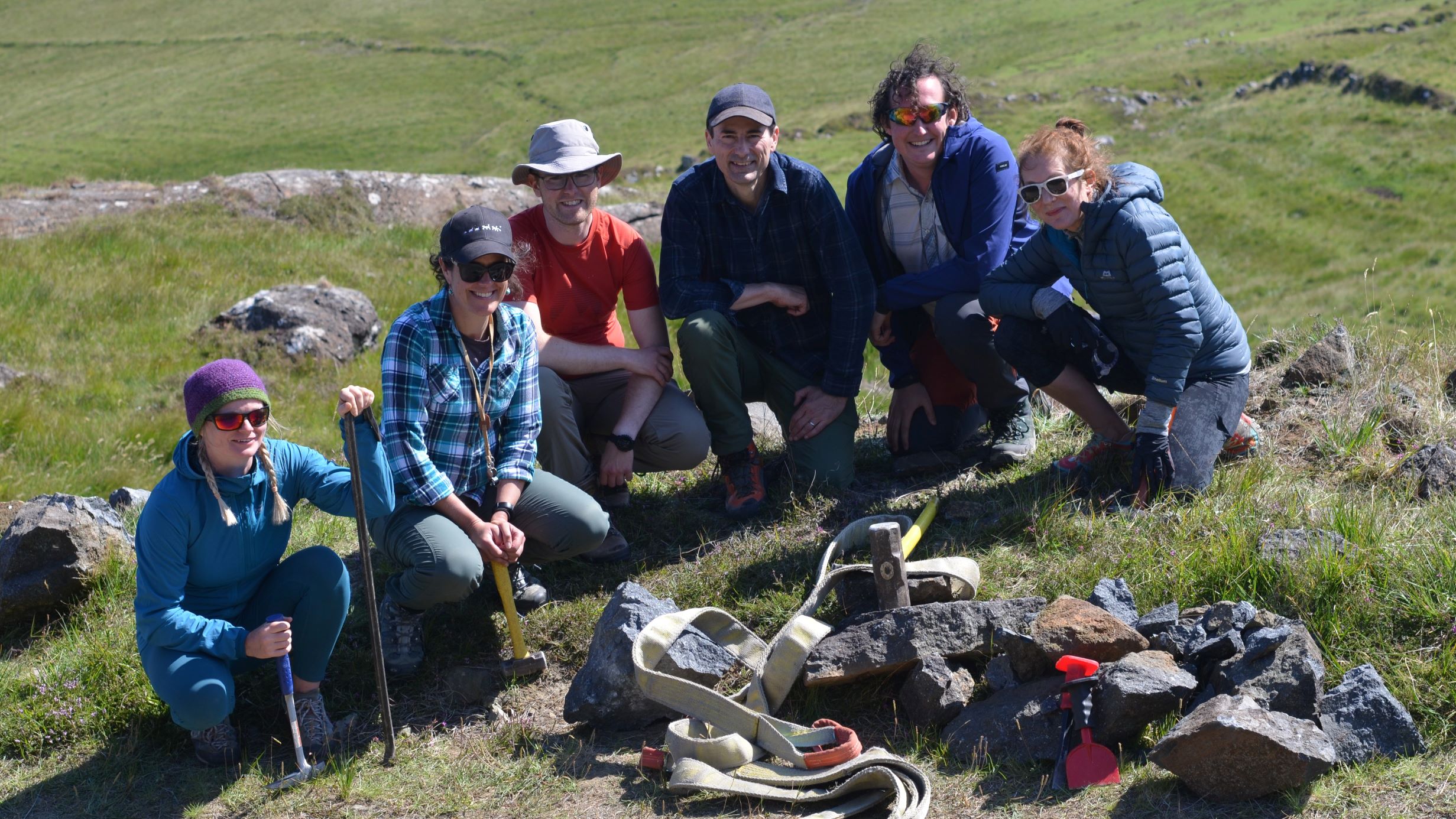
Submitted by Dr C.M. Martin-Jones on Fri, 28/07/2023 - 11:47
Ancient rocks from the Isle of Rum in northwest Scotland are playing an important role in an international space mission to discover more about Mars.
A group of scientists, including from the University of Cambridge, have this week been collecting samples of rock from the NatureScot National Nature Reserve (NNR) as part of the NASA and European Space Agency (ESA)’s Mars Sample Return Program.
The program is gathering samples of rocks from around the world that bear a similarity to those on Mars, ahead of rock samples from the Red Planet being brought back to Earth in 2033.
Rum has been selected as the only UK site for sampling, and is a high priority in the program, as some of its igneous rocks have a very similar mineral and chemical content to those that have been collected by NASA’s Perseverance Rover during its exploration of an ancient lakebed on Mars.
Intensive study of the rocks from Rum and around the globe will crucially help scientists understand what methods of testing and analysis will work best in readiness for when the Martian rocks return to Earth.
As the first samples from another world, the Mars rocks are thought to present the best opportunity to reveal clues about the early evolution of the planet, including the potential for past life.
The Rum sampling is being led by Dr Lydia Hallis, a geologist and planetary scientist from the University of Glasgow, and member of the program’s Science Group. The team also includes scientists from the University of Cambridge, the University of Leicester and Brock University in Canada.
“These Rum rocks are an excellent comparison to one particular Martian rock sample, which the NASA Perseverance Rover collected from the igneous Séítah Formation within Jezero crater,” said Hallis. “Not only is the mineralogy and chemistry similar, but the two rocks appear to have a similar amount of weathering.
“This seems strange when we think how wet and warm Rum is compared to present-day Mars, but billions of years ago when the Séítah formation crystallised on Mars the difference in environment would not have been so pronounced. At this time Mars was much wetter and warmer, with a thicker atmosphere that may even have produced rain (though not as much as we get in Scotland!). Over time the Martian atmosphere thinned, leaving the surface much dryer and colder, essentially halting any further weathering within Séítah and preserving the rocks at Jezero Crater for us to investigate today.
“The rocks on Rum are much younger, but their exposure to the Scottish elements has produced roughly the same amount of weathering as was produced in the Séítah Formation during Mars’ early wet and warm climate. Because of all these similarities, analysis of the Rum rocks should give us a good head start and help the samples from the Red Planet achieve their full potential when they are returned to Earth.”
“It’s amazing to think that somewhere right here in the UK might be able to tell us something about the geology of a different planet,” said team member Professor Helen Williams from Cambridge’s Department of Earth Sciences. “We’ve still got several years left to wait before we can study the real Mars rocks, but in the meantime, our Scottish samples will provide scientists with the perfect material to test and refine the analytical techniques they will be using to investigate material returned from the Red Planet.”
Lesley Watt, NatureScot’s Rum NNR reserve manager, said: “With its extinct volcanoes and dramatic mountains, Rum has always been one of the best places to discover Scotland's world-class geology, but we didn’t quite realise that the rocks here were of interplanetary significance as well.
“It has been fascinating to learn more about the NASA/ESA mission, and really exciting for the island to play a small part in this truly historic endeavour to find out more about Mars. We hope it will add yet another element of interest for visitors to this special place.”
Adapted from a NatureScot press release.

